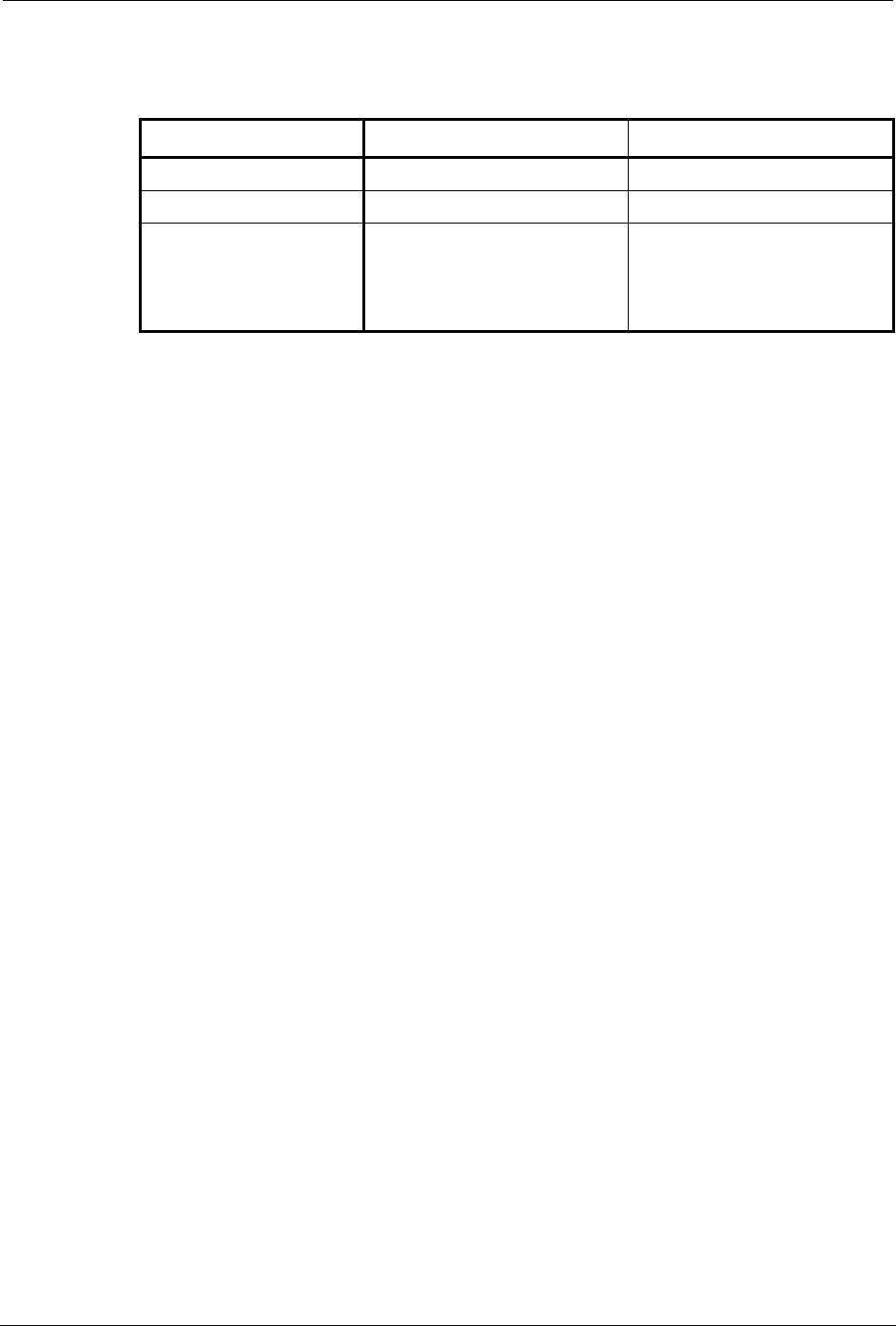
DART 300 Migration Guide Difference Summary
2110291 Rev 1.0 Page 14
3.2.3. TCP Characteristics
DART 200 DART 300
Friends Only mode Yes (up to 10 IP addresses) Yes (up to 10 IP addresses)
Auto Answer Yes
1
Yes
TCP Keep Alive
2
Yes, drops connection on
receive timeout and generates
character on transmit timeout.
Yes, drops connection on
receive or transmit timeout.
This timer also applies to
UDP sessions.
1
On the DART 200 Auto Answer is off if DTR is off and either &D1 or &D2 is specified. It also
requires S0=1 and either the TCP server (*A1) or UDP server (*A2) to be specified.
2
The behaviour of, and the mechanism for setting, the keep-alive differs between the models.
Details follow in Section 3.2.3.1.
3.2.3.1. TCP Keep-Alive
The DART 300 supports only a bi-directional idle timer (
S30
) while the DART 200 can select
either or both directions, and will generate a dummy transmission on a transmit timeout in order to
hold a session open. Also note that the DART 300 applies the session idle timer to both TCP and
UDP sessions, whereas the DART 200 applied keep-alive to TCP only.
The DART 200 uses a timer in register
S86
, which is equivalent to the DART 300’s register
S30
.
These timers are both in units of minutes and both reset when any data is received or transmitted.
The default value in the DART 200 is 120 minutes (
S86=120
), with an allowed range of 1 to 255.
There is no zero value because the feature is enabled or disabled using another AT command (
*K
).
The DART 300 has a narrower timeout range of 0 (disabled) to 20 minutes.
Using the default DART 200 setting of
*K0
(no keep-alives) is equivalent to the default setting on
the DART 300 (
S30=0
) with the session timer disabled. The modems will both keep the session
open indefinitely.
The DART 300 does not support the unidirectional keep-alive system that the DART 200 can
implement with
*K1
(transmit only) and
*K2
(receive only).
For transmit-only cases (
*K1
), the DART 200 will forward either a partially assembled packet or,
if there is no pending data, a keep-alive character set in
S85
. The receiving end must recognize
the single keep-alive character and discard it. The DART 300 does not support sending or
receiving these dummy keep-alive character packets.
If the DART 200 is using the receive-only setting (
*K2
) then there is a partial equivalent in the
DART 300. The DART 300 can close the session if there is no data received within the timeout,
but the DART 300 does not recognize dummy keep-alive characters. If the other end of the
session sends a dummy keep-alive character, the DART 300 will treat it is valid received data and
reset the session timeout timer.
The DART 200 setting of
*K3
(bi-directional keep-alive control) is almost equivalent to the
DART 300 setting of
S30=x
where x is the same setting used in the DART 200 register
S86
.
Again, the DART 300 cannot process keep-alive character packets from the other end. The timer
will reset but the character will not be automatically discarded.
